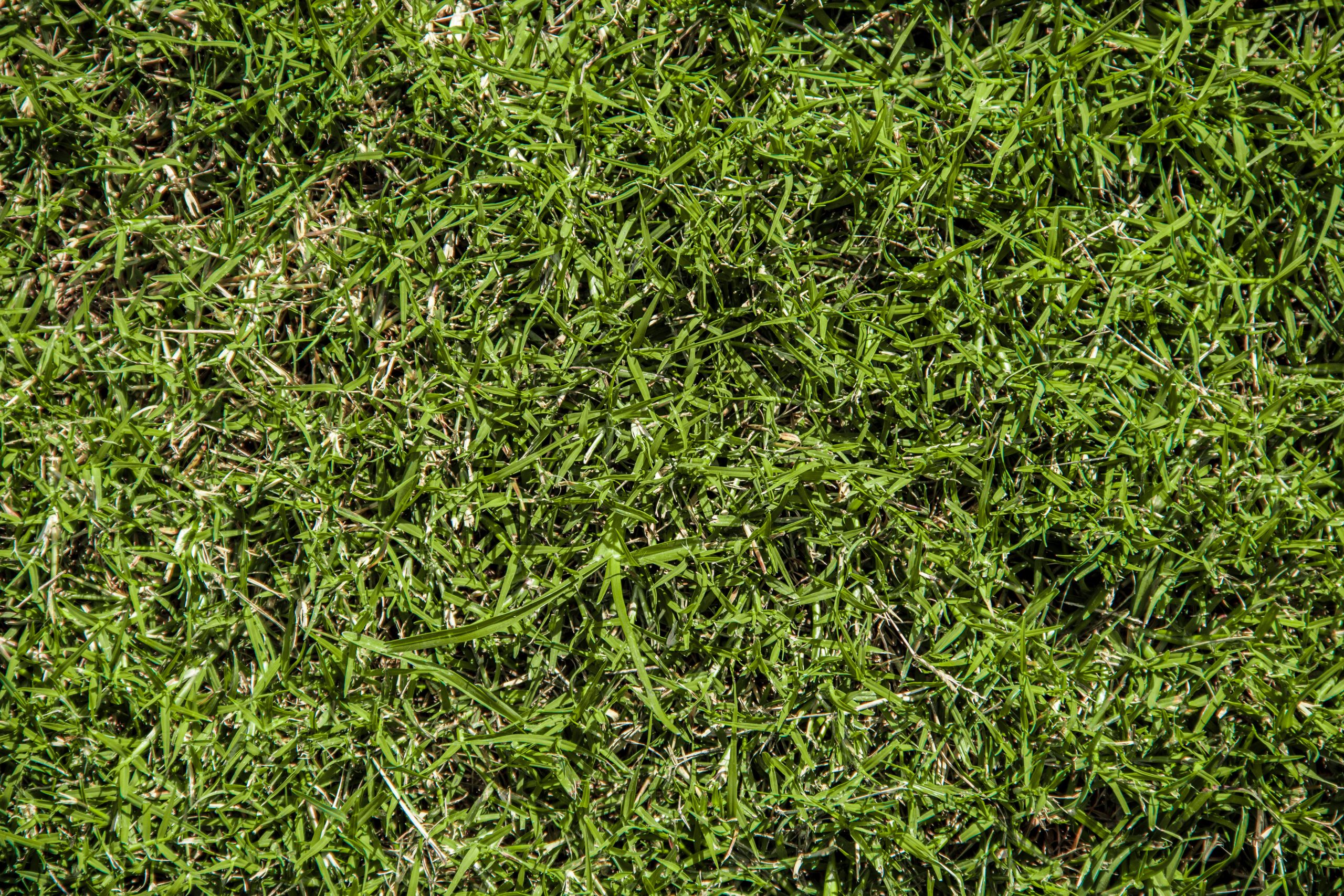Maintaining a year-round lush green lawn isn’t typically possible unless you overseed Bermuda grass, your warm-season grass, with a cool-season grass like perennial ryegrass. If your Bermuda grass lawn is thin, you should also overseed with perennial ryegrass seed or another cool-season grass like tall fescue. Overseeding a Bermuda grass lawn allows you to fill in bare spots of your lawn. You will also have more green lawn to enjoy during the winter months as opposed to the brown, dried-out appearance that usually accompanies Bermuda grass during the cold season.
When you overseed Bermuda grass, you can also reduce the risk of weed infestation. Common weeds will find it difficult to get a foothold in a dense lawn, especially in early spring when your winter grasses are still thriving. To promote a year-round green lawn, use the following tips to overseed Bermuda grass.
When to Overseed a Bermuda Grass Lawn
Spring is the peak of the growing season for Bermuda grass; it’s also the best time to aerate and overseed your Bermuda grass lawn with bermuda grass seeds. You’ll want to avoid aerating and overseeding Bermuda grass in early spring in case the soil isn’t warm enough to support seed germination. Instead add bermuda seeds in the middle of spring to fill out your lawn. The soil temperature should be sufficiently warm enough to support seed germination. As new grass seedlings emerge, they’ll fill in patches or thin areas of the lawn.
On the other hand, if you want to promote a green lawn during the cool season, you should overseed your Bermuda lawn in the fall. Plant grass seed from perennial ryegrass or Kentucky bluegrass. Bermuda grass is a warm-season grass, so it will go dormant in winter and turn to a dull straw color or brown. Adding ryegrass seed or other cool-season grasses will ensure that you have a green lawn during the cool season. To avoid brown dormant Bermuda grass lawns in winter, plant annual and perennial ryegrass for best results.
How to Overseed a Bermuda Grass Lawn
Before you overseed your lawn, you’ll need to choose your grass seed. During the warm season, you can overseed with Bermuda grass seed in early spring, late spring, or even as late as early summer. However, if you want to overseed your lawn in fall, the choice of grass seed is a bit trickier. For instance, if you plant Kentucky bluegrass, it might not go dormant as quickly as you’d like come springtime when you expect your bermuda grass to enter its growing season.
Many gardeners opt for annual ryegrass as their first choice for fall planting. Annual ryegrass usually dies just as early spring arrives and your bermuda grass begins to emerge from dormancy. It’s ideal to choose grass that won’t compete with your Bermuda lawn.
Steps for Bermuda Grass Overseeding Success
First, stop your use of pre emergency hebrides about three months before you intend to plant grass seed. The herbicide can prevent seedling establishment. Before planting Bermuda seeds, check soil temperatures. Soil temperatures should ideally be between 60-70 degrees Fahrenheit.
Next, before aerating and seeding your lawn, mow the lawn low. You should also rake before planning your grass seed or ryegrass seed to ensure the soil is loosened. Next, plant your Bermuda seeds across your lawn. You should plan to plant about seven pounds of grass seed for every 1,000 square feet of the lawn area.
After sowing the seeds, you should add nitrogen fertilizer to the soil surface. This will speed germination of your grass seeds. Once the new seedlings emerge, you can resume the mowing height that you used prior to overseeding. On the other hand, many gardeners wait about a month before they resume mowing their lawn after they’ve overseeded it and new seedlings are more than two inches in height.
Bermuda Grass Overseeding FAQs
Can you overseed with Bermuda grass?
Yes, you can overseed Bermuda grass to create a lush and healthy lawn. The best time to overseed with Bermuda seeds is in spring. You can also overseed your lawn with annual ryegrass seed or some other winter grass so that you’ll have a green lawn when your Bermuda lawn goes dormant. The best time to plant cool-season grasses is in the fall. Late summer is likely too early to plant annual ryegrass or other cool-season grasses.
Does overseeding Bermuda grass work?
Yes, overseeding a Bermuda lawn in the spring with Bermuda seeds works to create a lush and green lawn under normal conditions. Ideally, this warm-season grass should have full sun for best results. Be sure that soil temperatures and nighttime temperatures are warm enough to support germination. New grass seedlings do not have a robust cold tolerance. By planting during early or late spring, your new Bermuda seedlings should thrive by summer.
Can I plant Bermuda grass over an existing lawn?
Yes, you can plant Bermuda grass over your existing lawn. Be sure to aerate the soil first and follow the overseeding tips outlined above. Plant at the proper time to ensure grass seed germination. You can also plant ryegrass in the fall over your Bermuda lawn to promote healthy winter grass.
How do you overseed Bermuda grass?
To overseed Bermudagrass lawns, plant seeds before the spring transition to summer when temperatures allow for seeds to germinate easily. Water well to support the root development of seedlings. Monitor the growth rate of your seedlings. You can resume mowing after about a month or when seedlings have reached more than 2″ in height. You can stop fertilizing your lawn toward the end of its growing season.

